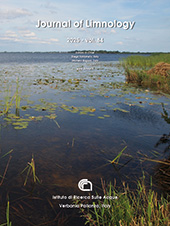Data Papers
Vol. 84 (2025)
Digitalization of the tardigrade collection of Giuseppe Ramazzotti
Publisher's note
All claims expressed in this article are solely those of the authors and do not necessarily represent those of their affiliated organizations, or those of the publisher, the editors and the reviewers. Any product that may be evaluated in this article or claim that may be made by its manufacturer is not guaranteed or endorsed by the publisher.
All claims expressed in this article are solely those of the authors and do not necessarily represent those of their affiliated organizations, or those of the publisher, the editors and the reviewers. Any product that may be evaluated in this article or claim that may be made by its manufacturer is not guaranteed or endorsed by the publisher.
Received: 13 February 2025
Accepted: 23 April 2025
Accepted: 23 April 2025
905
Views
211
Downloads
15
HTML







